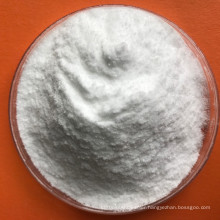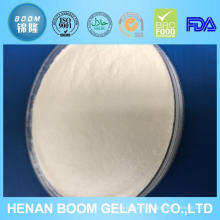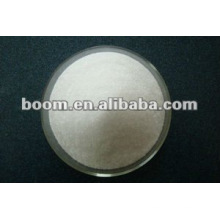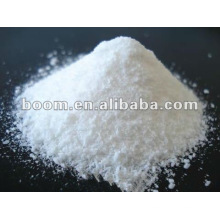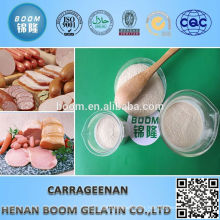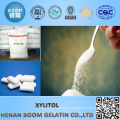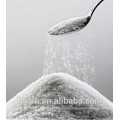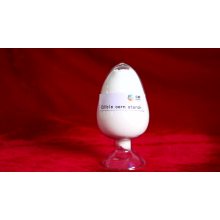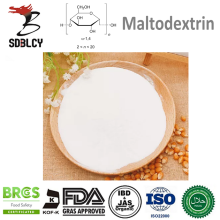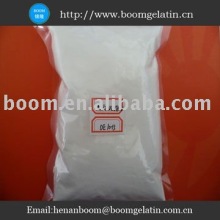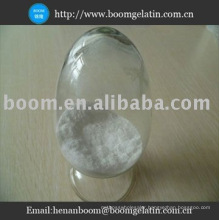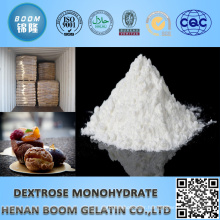food additive xylitol
Product Description
Introduction: Xylitol is a sugar alcohol used as a sweetener. used to denote sugar alcohols. Xylitol is categorized as a polyalcohol or sugar alcohol (alditol). It has the formula CH2OH(CHOH)3CH2OH and is an achiral isomer of pentane-1,2,3,4,5-pentol. Xylitol is roughly as sweet as sucrose (table sugar), with 33% fewer calories. Unlike other natural or synthetic sweeteners, xylitol is actively beneficial for dental health by reducing caries (cavities) to a third in regular use and helpful to remineralization.Multiple studies utilizing electron microscopy have indicated that xylitol is effective in inducing remineralization of deeper layers of demineralized enamel. Fair evidence was found that xylitol (as chewing gum, lozenges, nasal spray, etc.) reduced the incidence of acute middle ear infection in healthy children. Xylitol is naturally found in low concentrations in the fibers of many fruits and vegetables, and can be extracted from various berries, oats, and mushrooms, as well as fibrous material such as corn husks and sugar cane bagasse,and birch. However, industrial production starts from xylan (a hemicellulose) extracted from hardwoods or corncobs, which is hydrolyzed into xylose and catalytically hydrogenated into xylitol. A study in rats found that xylitol had reduced or nonexistent side effects compared to other artificial sweeteners, and lower caloric value and cariogenicity than sucrose. Production: Xylitol was discovered almost simultaneously by German and French chemists in the late 19th century, and was first popularized in Europe as a safe sweetener that would not affect insulin levels of people with diabetes. Xylitol is produced by hydrogenation of xylose, which converts the sugar (an aldehyde) into a primary alcohol. It can also be extracted from natural sources, and is often harvested by tapping birch trees to produce birch sap. Another method of producing xylitol is through microbial processes, including fermentative and biocatalytic processes in bacteria, fungi, and yeast cells, that take advantage of the xylose-intermediate fermentations to produce high yield of xylitol. Common yeast cells used in effectly fermenting and producing xylitol are Candida tropicalis and Candida guilliermondii. Its dental significance was researched in Finland in the early 1970s. There, scientists at University of Turku demonstrated dental benefits in what became known as the "Turku sugar studies". Properties: One gram of xylitol contains 2.4 kilocalories (kcal), as compared to one gram of sugar, which has 3.87kcal. Xylitol has virtually no aftertaste, and is advertised as "safe for diabetics and individuals with hyperglycemia." This tolerance is attributed to the lower effect of xylitol on a person's blood sugar, compared to that of regular sugars as it has an extremely low glycemic index of 7 (glucose has a GI of 100). Xylitol has no known toxicity or carcinogenicity, and is considered safe by the U.S. FDA Health benefits: Dental care Diabetes Source of energy Ear infection Contact us if you need more details on xylitol. We are ready to answer your questions on packaging, logistics, certification or any other aspects about xylitol powder、food additive xylitol. If these products fail to match your need, please contact us and we would like to provide relevant information.
Product Categories : Other Food Ingredients > Dextrose & Maltodextrin
Premium Related Products
Other Products
Hot Products
cattle feed choline chloride60% corn cobglucose powder for candyfood ingredients Iota CarrageenanStevia sugar plant100% natural pure fish collagensoybean peptide for reducing blood fatkonnyaku jelly powdercollagen powder in sachet200 bloom cow skin gelatin220 bloom edible cow bone gelatinhalal hydrolyzed gelatin powderGelatin powder/pharmaceutical Gelatin PowderMakeup Gelatin Raw Material Cosmetic GradeThe Good Quality Fish Gelatin Powder Price(Pharmaceutical Grade )High Bloom Deep Sea Fish GelatinCE Manufacturer Supply High Quality Yellow Powder Kosher Fish Gelatin

